The Dojo Loach (Misgurnus anguillicaudatus) can make a fascinating fish for a peaceful community tank.
Did you know that the Dojo or Pond loach can be taught to take food from your hand and tell you when a storm is coming?
Dojo loaches come in their wild coloration, or you might find a gold variant that can add a gorgeous pop of color to your tropical fish tank.
Read this guide on Dojo loach care to learn everything you need to know about these remarkable weather forecasters!
Dojo Loach – At A Glance
Scientific Name
Misgurnus anguillicaudatus
Common Name (species)
Dojo loach, Weather loach, Pond loach, Chinese Weatherfish, Oriental Weatherfish, Golden Dojo Loach, Japanese Weatherfish
Family
Cobitidae
Origin
Found in eastern and northeastern Asia, including Siberia, Myanmar, Japan, Central China, Korea, and Hainan
Diet
Omnivore
Care Level
Intermediate
Activity
Active burrowing fish
Lifespan
7 to 10 years
Temperament
Peaceful fishes
Tank Level
Mainly bottom-dweller but does visit the midwater and top area of the water column.
Minimum Tank Size
55 gallons
Temperature Range
Tropical 50° to 77° F
Water Hardness
5 – 12 dGH
pH Range
6.5 to 7.5
Filtration/Flow Rate
Likes a medium flow and good filtration
Water type
Freshwater
Breeding
Egg layer but not easy to breed in captivity
Compatibility
Peaceful but unsuitable for a community including shrimp, snails, and very tiny fish
OK, for Planted Tanks?
Plant-safe but does burrow
Origins
Dojo loaches, or Misgurnus anguillicaudatus, were first discovered by Cantor in 1842.
Although these cute little freshwater fish are pretty widespread throughout Asia, they are decreasing in some areas, largely due to increased human activity and ecosystem destruction. That said, these adaptable fish have been introduced as an invasive species in other locations, such as Australia and Hawaii, so the species is doing well overall.
Dojo loaches are not only collected for the aquarium trade, but in many countries, anglers use the little creatures as live fishing bait and as feeder fish in some Asian countries, including Japan.
Dojo Loach Natural Habitat
Dojo loaches inhabit swamps, ponds, rivers, and rice paddies where the water is slow-moving and fairly shallow. The fish prefer habitats where the soft substrate is muddy or sandy, making it easier for the fish to burrow.

Dojo loaches can take in atmospheric air from the water’s surface when dissolved oxygen in the water is depleted. In addition, these fascinating fish can leap out of the water onto land, where they can survive for relatively long periods as long as the terrain is moist.
Wild weather loaches are omnivores, eating algae, worms, small crustaceans, insect larvae, and insects they find in their immediate habitat.
Appearance
Dojo loaches look rather like tiny eels, having long bodies with flattened rear ends. The loaches have two sets of barbels on their lower jaw and another three around the top of the mouth.
These attractive little fish have generally patterned dark brown to greenish-gray with a brown to yellow base color, fading to lighter undersides. There is also a yellow-to-orange color morph known as a Golden Dojo loach. This variant is slightly thinner than regular Dojos, and their patterns are barely visible.
How Big Do Dojo Loaches Grow?
A full-grown captive Dojo loach can grow to around 6 inches long, although wild specimens can be much larger than that.

Life Expectancy
Captive Dojo loaches have a healthy life span of around 7 to 10 years.
Activity Level and Temperament
Dojo loaches are ideally suited to life in a community tank, being peaceful in nature and getting along well with most other species.
These loaches are lively fish that are most active at night, scavenging on the substrate for morsels of leftover food, digging, or burrowing in the substrate.
Dojo loaches have a totally cool behavior that never ceases to fascinate their owners. The fish can detect changes in barometric pressure, meaning they can sense an oncoming storm front! You’ll know when you’re in for some wild weather, and it’s time to batten down the hatches when your loaches become hyperactive!
Weather loaches are friendly creatures you can train to take scraps of food right from your hand, and some loach owners report that their fish even enjoy being petted!
Compatibility and Tankmates
What Fish Can Live With Dojo Loaches?
The Dojo loach is an excellent candidate for life in a large community tank with other peaceful, social fish. However, beware of adding invertebrates and very small fish to a setup with loaches, as they might be viewed as a food source and eaten!
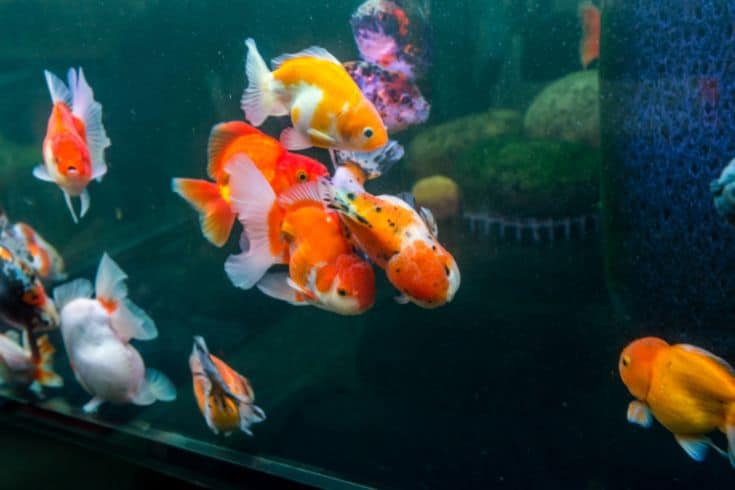
Dojo loaches are bottom-dwellers, so choose fish species that gravitate to the middle and upper areas of the water column.
Of course, you should avoid keeping aggressive fish with your Dojo loaches.
Are Dojo Loaches Aggressive?
No. Dojo loaches are peaceful with other species and their own.
How Many Dojo Loaches Should Be Kept Together?
These fish prefer to live in groups of three or more rather than being kept in isolation. Since these fish can live in a wide temperature range, you can keep them in outdoor ponds in larger groups.
Feeding
What to Feed Your Dojo loaches
These fish are omnivores that enjoy a healthy diet of vegetable matter and meaty protein. In the wild, the fish eat whatever comes their way, including crustaceans, insect larvae, and small insects.
Captive loaches do best when fed a balanced diet. The fish will eat most live and frozen meaty foods, such as blood worms, baby brine shrimp, tubifex worms, tropical pellets and flake food, and sinking pellets.
If you have a snail problem in your tank, Dojo loaches can be extremely helpful in that they will eat the mollusks!
Are Dojo Loaches Algae Eaters
Algae form part of the wild Dojo loach’s diet, and they will graze on algae in your tank. That said, these fish are not generally regarded as part of a cleaning crew since the amount of algae they eat is pretty small.
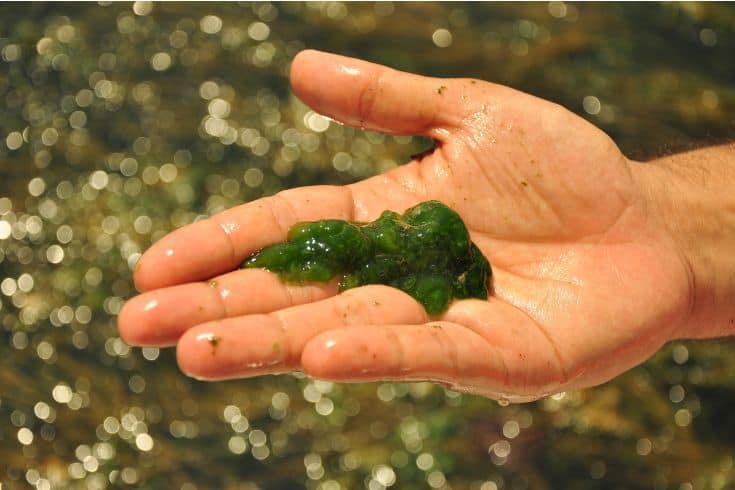
How Much and How Often to Feed
I recommend feeding your loaches twice a day, offering them just enough to keep them busy for a couple of minutes.
Remember that your loaches are efficient foragers, so don’t overfeed them. Overfeeding can cause health issues, and decomposing food will produce ammonia that will pollute the tank water.
Tank Requirements
Tank size
Dojo loaches can grow to around 6 inches long and need a minimum tank size of 55 gallons to be comfortable. Ideally, your tank should be rectangular rather than tall and be at least 4 feet long.
As previously mentioned, these lively fish can jump, so ensure your tank has a cover slide or a tight-fitting lid to prevent accidents during tank maintenance.
Tank Setup
Substrate
These busy little fish are great burrowers, so you must ensure that the substrate you choose is soft and easy to dig in without injuring your loaches.
These fish also enjoy burying themselves, so you need to use something like sand or fine gravel and avoid coarse substrate that could injure your fish.
Decoration
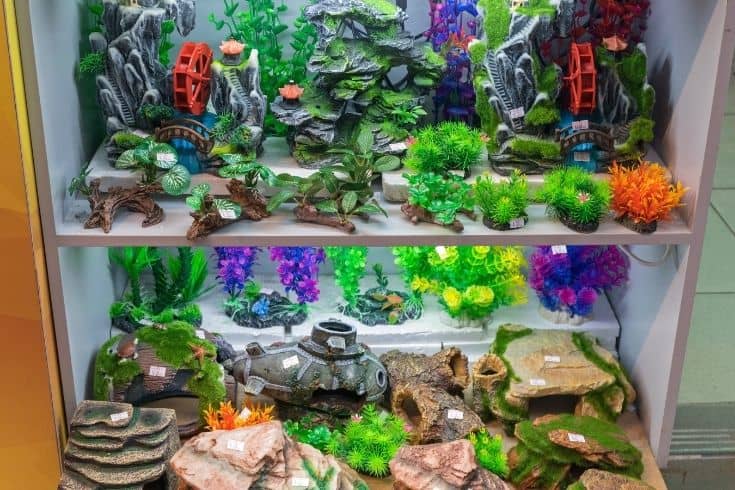
Like all fish, Dojo loaches do best and look most attractive when kept in a tank that closely mimics their natural habitat. Ideally, you want to use lots of driftwood, smooth stones, twisted roots, and caves where the fish can hide and explore.
Plants
Aquarium plants make an attractive addition to your setup and are great for the environment, too. However, remember that these fish will dig and burrow around the plant roots, so you’ll need to keep your planting well-anchored to prevent the fish from uprooting them.
Habitat Requirements
Since Dojo loaches need pristine water conditions, you need to add them to a mature aquarium with stable water chemistry and an efficient biological filter rather than a brand-new setup.
Filtration
Weather loaches need water that is well-oxygenated and clean, and they prefer a moderate flow.
Bearing in mind that the loaches need a large tank, we recommend using a combination of an external canister filter and an undergravel filter too.
Water Parameters
Dojo loaches need pristine water conditions to thrive and the correct water chemistry.
Are Dojo Loaches Cold Water Fish?
Dojo loaches are usually assumed to be a tropical fish species rather than cold water fish.
However, these fish can tolerate a wide temperature range between 50° and 77° F. In fact, if you keep Weather loaches in cool water temperatures, they often live longer than those in a tropical tank.
Water Hardness and pH Range
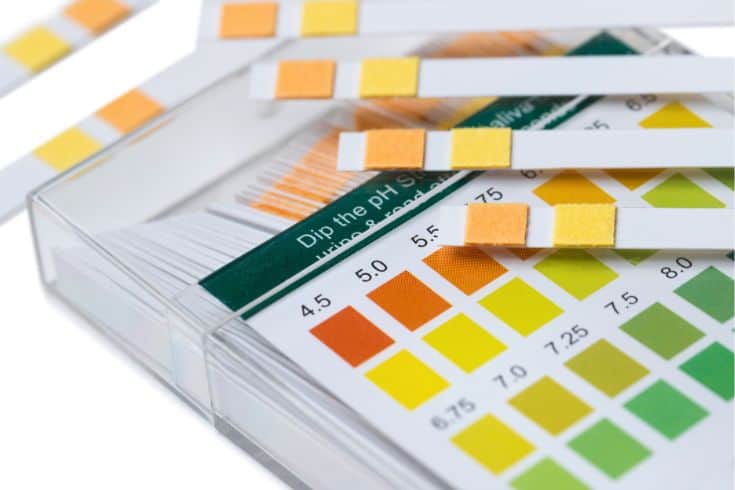
Your tank water should have a pH of between 6.5 and 7.5, with a water hardness of 5 to 12 dKH.
Note that Dojo loaches cannot live in brackish conditions.
Lighting
These fish prefer a dimly lit environment, so we recommend choosing a lighting unit that you can adjust to suit your fish and planting.
Tank Maintenance
You need to provide your Dojo loaches with clean, well-oxygenated conditions if they are to do well, so you need to run an efficient filter system and perform weekly partial water changes of at least 30%.
As part of that maintenance routine, use an aquarium vacuum to clean underneath your tank decorations and remove organic matter and dead plant matter. Although you want to keep your viewing panes clear of algae, remember to leave some algae in the tank for your fish to graze on.
Disassemble your filter system every couple of weeks and rinse the filter media in tank water to remove any material that might prevent water from flowing freely through the unit. Change the filter media periodically as recommended by the manufacturer.
Setting Up the Aquarium
Gather together everything you need to set up your aquarium, including the following:
- Sand or fine gravel soft substrate
- LED lighting unit
- Canister filtration system
- Water dechlorinator
- Undergravel filter system
- Heater
- Aquarium thermometer
- Tank decorations
- A selection of hardy plants
How to Set up Your Aquarium
- Wash the substrate under running water to remove debris and dust.
- Add a couple of inches of the substrate to your tank.
- Add the filter and heater to the tank, but leave them switched off for now.
- Add dechlorinated tap water to just below the fill line. I always put an upturned dish on top of the gravel to prevent the water from dislodging the substrate when I pour it in.
- Rinse the tank décor to remove dust, and then arrange your decorations in the tank.
- Remove dead leaves and broken stems from your plants and add them to your aquarium, allowing plenty of space between the plants so that they can grow and spread.
- Activate the heater and filter. If you have live plants in your tank, you must have the lights switched on for eight to ten hours daily.
- Wait for at least ten days before adding your loaches to the tank to ensure the habitat has fully cycled. Before adding your fish, test the levels of ammonia, nitrites, and nitrates. When ammonia and nitrite are at zero and nitrate levels are below 20 ppm, you can add your fish.
Health and Disease
Dojo loaches are a hardy fish species, although they can be vulnerable to common fish diseases and they are susceptible to poor water conditions.
You should also note that these loaches can be sensitive to certain fish medications, so we recommend treating them in a separate hospital tank.
Signs of Good Health
Dojo loaches are active, nosy fish that spend most of their time patrolling the bottom of the tank, rooting through the substrate for food.
If the barometric pressure changes, you might see your loaches going crazy in response to the conditions.
Red Flags
There are some red flags that could indicate health problems brewing for your Dojo loaches, including the following:
- Poor appetite
- Lethargy
- Not socializing with conspecifics and tank mates
- Obvious skin damage, such as sores, ulcers, or red patches
- Rubbing against solid objects in the aquarium
Common Health Issues and Treatment
Health Issue
Ich (White Spot Disease)
Symptoms or Causes
Ich is a very common disease that’s caused by an aquatic protozoan parasite.
Fish infected with Ich develop a sprinkling of tiny white spots on their fins, gill covers, and bodies. They also flash against the gravel and other solid objects in the aquarium.
Suggested Action
Raise the water temperature to 82o F for three days. Use an OTC White Spot Disease medication to treat the tank.
Health Issue
Flukes
Symptoms or Causes
Flukes is the term used to describe various types of external fish parasites. These macroparasites can often be seen with the naked eye attached to the fish’s skin or gills.
Suggested Action
Treat the fish tank with an OTC antiparasitic medication.
Health Issue
Fungal infections
Symptoms or Causes
White fluffy growths on the fish’s body, mouth, and head.
Suggested Action
Quarantine infected fish, and treat with an antifungal medication.
Health Issue
Bacterial infections
Symptoms or Causes
Sores and ulcers on the body and head, ragged, bloody fins.
Suggested Action
Treat the tank with OTC antibacterial treatment.
Breeding
Dojo loaches are egg layers. However, these fish are impossible to breed in a home aquarium. The Weather loaches you find in fish stores or for sale online are usually wild-caught or raised commercially on fish farms.
Availability
Both the regular and golden varieties of Dojo loaches are usually available in fish stores or online, priced at around $6 or $7 per fish.
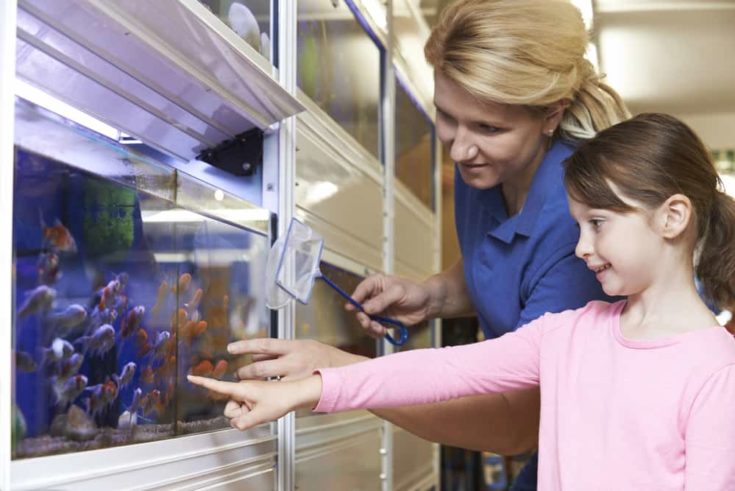
Product Recommendations
- Water conditioner/dechlorinator
- Algae magnet
- Aquarium thermometer
- Aquarium vacuum
- Books on keeping tropical fish
- Filtration system
- Fish tank (minimum size 55 gallons of water)
- Heater
- A selection of tropical fish foods, including frozen products
- LED lighting unit
- Plants
- Tank decorations
- Sand or fine-gauge gravel substrate
Final Thoughts
Did you enjoy our guide to the fascinating, quirky Dojo loach? If you did, please take a moment to share the article with other fish keepers.
Dojo loaches are relatively easy to care for, fun fish that do best in a community tank with pristine, well-oxygenated water and friendly tank mates. Your fish will tell you when a storm is coming by darting agitatedly around the tank, and they will sometimes take food from your hand too.
Do you keep Dojo loaches in your aquarium? Are they accurate weather forecasters? Tell us about your fish in the comments box below!

Thanks for the article it was really helpful. I just wanted to know if I could keep 3 dojo loaches in a 75 gallon tank with my 3 year old common goldfish(stunted). Since there is lots of hornwort to absorb nitrates and the goldfish is only 6-7 inches I thought the water volume would be enough to dilute the massive bioload. I have heard stories of dojo loaches attacking goldfish and just wanted to know if the tank would be too cramped for these two species. Would a schedule of 40%-50% water changes every week be okay without ever having to upgrading to a new tank?
Hi Josh
Thanks for your comment. I’m so glad you found the article helpful.
Although goldfish and Dojo loaches can live together peacefully, you must provide a larger tank. It’s not so much for the bioload, as an efficient filtration system and regular water changes will handle that, the problem is more the loaches may become belligerent toward your goldfish if they’re too cramped.
As regards 40% to 50% water changes, I prefer not to change that much water. Although changing large amounts of water will dilute the nitrate levels in the water, you’re also in danger of removing a bunch of the beneficial bacteria that you need for efficient biofiltration. So, I think you would be best upscaling your tank as the loaches grow bigger.
Hope that helps!
Alison P.
Fellow fishkeeping enthusiast and site author